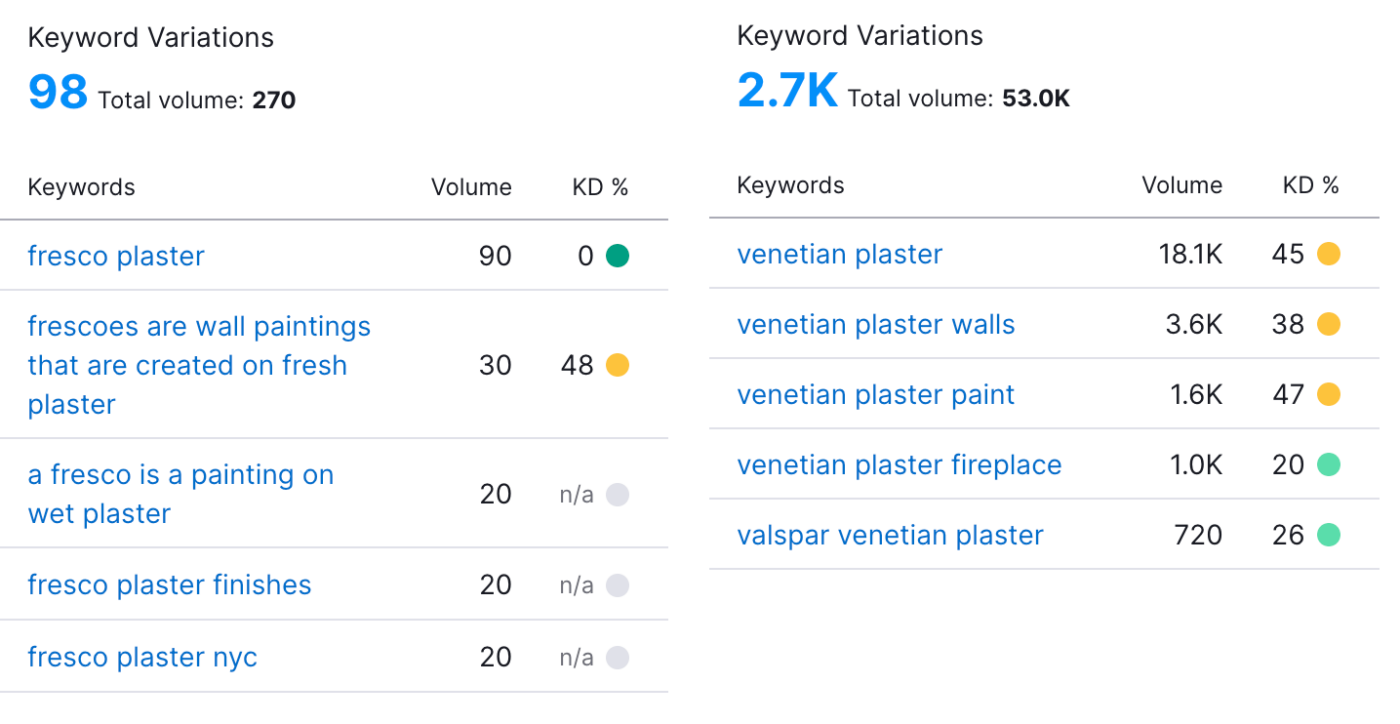Search Engine Optimization (SEO) is a complex concept that is constantly changing as the web and search engines themselves evolve. This means staying on top of SEO trends and theories is a never ending task that really does require a specialist who understands the ever changing SEO landscape.
When thinking about all that SEO encompass it can be quite overwhelming. What are the latest SEO tools? What did the latest Google algorithm update mean for your website? What are people searching for today? What impact will ChatGPT have on how people use search engines? What are your competitors doing that you are not? The questions are many. As with any complex problem the way to solve it is to break it down into smaller more manageable parts and thats where the three pillars of SEO come into play.
What are the three pillars of SEO?
- Technical SEO – the code and structure behind your web site
- On Page SEO – the content of your website
- Off Page SEO – other websites and how they link back to you

Technical SEO
What is technical SEO?
Technical SEO refers to the practice of optimizing a website’s technical aspects to improve its search engine visibility and performance. It focuses on ensuring that search engine crawlers can effectively access, crawl, interpret, and index the website’s content. By implementing technical SEO best practices, website owners can enhance their chances of ranking higher in search engine results pages (SERPs) and driving organic traffic to their site.
Here are some key areas that technical SEO typically covers:
- Website Structure: Optimizing the website’s structure involves creating a logical hierarchy with clear navigation and a well-organized internal linking structure. This helps search engines understand the relationships between different pages and index them more efficiently.
- Website Speed and Performance: Fast-loading websites are preferred by search engines and users alike. Technical SEO involves optimizing various factors that affect website speed, such as minimizing file sizes, leveraging browser caching, optimizing code, and utilizing content delivery networks (CDNs).
- Mobile-Friendliness: With the increasing use of mobile devices, search engines prioritize mobile-friendly websites. Technical SEO involves making sure that the website is responsive and adapts well to different screen sizes, providing a positive user experience on mobile devices.
- Indexing and Crawling: Ensuring that search engines can crawl and index the website’s content is crucial for visibility. Technical SEO involves creating a clear and well-structured XML sitemap, optimizing robots.txt files to guide search engine crawlers, and addressing crawl errors or duplicate content issues.
- URL Structure: Optimizing the URL structure involves creating descriptive and user-friendly URLs that include relevant keywords and provide a clear indication of the page’s content. This helps search engines understand the context of the page and improves the chances of ranking for relevant queries.
- Canonicalization: To prevent duplicate content issues, technical SEO involves implementing canonical tags to indicate the preferred version of a page when multiple versions with similar content exist. This consolidates the authority and relevancy signals to a single page and avoids dilution of search engine rankings.
- Schema Markup: Utilizing structured data markup, such as Schema.org vocabulary, helps search engines understand the content and context of a webpage better. Technical SEO involves implementing schema markup to provide additional information about the page’s content, which can result in enhanced search engine display features like rich snippets.
- SSL/HTTPS: Implementing secure socket layer (SSL) encryption and using the HTTPS protocol is now considered a best practice for all websites. Technical SEO involves ensuring that the website is secured with an SSL certificate, which provides a secure and encrypted connection between the user’s browser and the website.
Technical SEO plays a vital role in optimizing a website for search engines, improving its crawlability, indexability, and overall performance. By focusing on these technical aspects, website owners can lay a solid foundation for their SEO efforts and increase their chances of ranking higher in search engine results.
How does Full Send SEO address technical SEO?
Ensuring that Google can discover, understand, and index your websites content is critical to having any SEO success. This is why technical SEO is always where a Full Send SEO audit will start. We use industry leading tools to crawl and evaluate your website and it’s content and produce an actionable report identifying potential issues and suggestions on how to resolve them.
The technical SEO solutions are also a good place to start because they are going to be clearly defined and easy to validate. Their effect on SEO may take some time as Google re-indexes or evaluates real world user experience but Full Send SEO has the tools and experience to confirm the fixes in real time.
On Page SEO
What is On Page SEO?
On-page SEO refers to the optimization techniques and practices implemented directly on individual web pages to improve their search engine visibility and rank higher in search engine results pages (SERPs). It involves optimizing various on-page elements and factors to enhance the relevance, user experience, and overall quality of a webpage.
Here are some key aspects of on-page SEO:
- Keyword Optimization: Conducting keyword research and strategically incorporating relevant keywords into the page’s content, headings, title tags, meta descriptions, and URL can help search engines understand the page’s topic and improve its visibility for specific search queries.
- Content Quality and Relevance: Creating high-quality, unique, and valuable content is essential for on-page SEO. The content should be relevant to the target audience and effectively address their needs, questions, or search intent. Well-structured content that includes headings, subheadings, and bullet points helps both users and search engines understand the page’s organization and key points.
- Title Tags and Meta Descriptions: Crafting compelling and descriptive title tags and meta descriptions is important for attracting users’ attention in the search engine results. These elements should accurately summarize the page’s content, include relevant keywords, and encourage users to click through to the webpage.
- URL Structure: Using descriptive, concise, and keyword-rich URLs helps search engines and users understand the content of the page. Clean URLs that include relevant keywords and reflect the page’s topic tend to perform better in search results.
- Header Tags: Utilizing proper header tags (H1, H2, H3, etc.) helps structure the content and highlight the page’s key points. The H1 tag should typically contain the main headline or page title, while subsequent header tags can be used to organize subheadings and sections within the content.
- Image Optimization: Optimizing images by using descriptive file names, alt text, and compressed file sizes can improve the page’s overall SEO. Properly optimized images can appear in image search results and contribute to the page’s relevance for relevant keywords.
- Internal Linking: Creating a logical internal linking structure helps search engines understand the relationships between different pages within a website. Internal links distribute authority, improve user navigation, and assist search engine crawlers in discovering and indexing pages more effectively.
- User Experience (UX): User experience is a crucial aspect of on-page SEO. Ensuring that webpages load quickly, have a responsive design for various devices, and offer a user-friendly and intuitive interface contributes to a positive user experience. This can indirectly impact search engine rankings as search engines prioritize websites that provide a good user experience.
On-page SEO focuses on optimizing individual webpages to make them more relevant, user-friendly, and search engine-friendly. By implementing on-page optimization techniques, website owners can improve the visibility and ranking of their webpages in search engine results, ultimately driving more organic traffic to their site.
How does Full Send SEO address On Page SEO?
Where technical SEO is absolute in it’s methodology and solutions, On Page SEO is more nuanced. Keyword optimization and content quality and relevance can be quite subjective. Full Send SEO can help by providing detailed information about what keywords people are actually searching for, what the completion is doing to out perform you, and we will provide a detailed plan on how to improve your sites rankings for keywords that will drive additional organic traffic to your site.
While “fresco plaster” may have seemed like the right keyword to focus on for Sydney Harbour Paint as it was a top selling product understanding that “venetian plaster” is actually what people search for 18,000 more times a month creates a huge opportunity. This is an example of where Full Send SEO can use data to help with the On Page SEO nuance.

Off Page SEO
What is Off Page SEO?
Off-page SEO refers to the optimization strategies and activities that take place outside of the website itself to improve its search engine rankings and online reputation. Unlike on-page SEO, which involves optimizing the website’s internal elements, off-page SEO focuses on factors that occur on external websites and platforms. Off-page SEO primarily aims to enhance the website’s authority, trustworthiness, and relevance in the eyes of search engines.
Here are some key components of off-page SEO:
- Link Building: Link building is the process of acquiring external links from other websites to your own. High-quality and relevant backlinks are considered votes of confidence and can positively influence a website’s search engine rankings. Various link building techniques include guest blogging, content promotion, influencer outreach, and obtaining links from authoritative sources.
- Social Media Engagement: Establishing a strong presence and engagement on social media platforms can indirectly impact search engine rankings. By sharing valuable content, encouraging social sharing and engagement, and building a loyal community, you can increase brand visibility, attract traffic, and potentially gain social signals that search engines consider in their ranking algorithms.
- Online Reputation Management: Managing and maintaining a positive online reputation is crucial for off-page SEO. This involves monitoring and responding to customer reviews, managing business listings on review sites, and actively addressing any negative mentions or feedback. A positive online reputation helps build trust and credibility, which can indirectly impact search engine rankings.
- Brand Mentions: Having your brand mentioned on other websites, even without a direct link, can contribute to off-page SEO. Search engines consider brand mentions as indicators of authority and relevance. Actively seeking opportunities for brand mentions, such as through partnerships, sponsorships, or collaborations, can help enhance your website’s visibility and reputation.
- Social Bookmarking: Submitting and promoting your website’s content on social bookmarking sites can generate traffic, increase exposure, and potentially earn backlinks. Social bookmarking involves sharing and bookmarking your website’s pages or content on platforms like Reddit, StumbleUpon, Digg, or Delicious.
- Influencer Marketing: Collaborating with influential individuals or thought leaders in your industry can help expand your reach and attract a relevant audience. Influencers can promote your brand, share your content, and provide valuable endorsements that can positively impact your website’s visibility and credibility.
- Online Directories and Citations: Ensuring your website is listed on reputable online directories and citation websites relevant to your industry or location can contribute to off-page SEO. These listings provide additional exposure, improve local search rankings, and validate your website’s credibility and authority.
- Guest Blogging: Writing and publishing guest posts on external websites allows you to showcase your expertise, gain exposure to a new audience, and acquire valuable backlinks. Guest blogging on reputable and relevant websites can positively impact your website’s authority and visibility.
Off-page SEO plays a critical role in establishing a website’s reputation, authority, and relevance in the online ecosystem. By employing various off-page optimization techniques, website owners can enhance their website’s visibility, attract more organic traffic, and improve their search engine rankings.
How does Full Send SEO address Off Page SEO?
Off Page SEO is arguably the most difficult part of any SEO strategy to implement and that’s largely because it websites that are out of your control to link back to you. This means it’s labor intensive, time consuming, and can be slow to take hold. Full Send SEO will be able to provide you with a data driven strategy to streamline this process. It begins with a detailed list of all the websites that are currently linking to your competition. If they are willing to link to them, why not you? Perhaps starting an affiliate program, or in Avatar Offroad’s example a “builder program” creating a network of other businesses that use your products and getting them to link to you.
There are companies that offer link building campaigns. Full Send SEO can help you navigate these services to make sure you get quality inbound links that will actually help with your domains authority and SEO efforts.
The Full Send SEO approach to the three pillars of SEO
We have discussed the three pillars of SEO: Technical SEO, On-Page SEO, and Off-Page SEO. Here’s a summary of each section:
- Technical SEO: This pillar focuses on optimizing the technical aspects of a website to improve its search engine visibility and performance. It includes optimizing the website’s structure, speed, mobile-friendliness, indexing, URL structure, canonicalization, schema markup, SSL/HTTPS implementation, and more. Technical SEO ensures that search engines can effectively crawl, interpret, and index the website’s content.
- On-Page SEO: On-Page SEO refers to the optimization techniques implemented directly on individual web pages to improve their visibility in search engine results. It involves keyword optimization, content quality and relevance, title tags and meta descriptions, URL structure, header tags, image optimization, internal linking, and user experience. On-Page SEO aims to make web pages more relevant, user-friendly, and search engine-friendly.
- Off-Page SEO: Off-Page SEO involves optimization strategies that occur outside of the website to improve its search engine rankings and online reputation. It includes link building from external websites, social media engagement, online reputation management, brand mentions, social bookmarking, influencer marketing, online directories and citations, and guest blogging. Off-Page SEO focuses on enhancing the website’s authority, trustworthiness, and relevance in the eyes of search engines.
How Full Send SEO addresses each pillar.
For technical SEO, we conduct audits using industry-leading tools to identify potential issues and provide actionable recommendations. For on-page SEO, we use data-driven strategies to improve keyword optimization and content quality. For off-page SEO, we provide a data-driven approach to streamline link building efforts and acquire quality inbound links.
Overall, the three pillars of SEO work together to optimize your website for search engines, improve its visibility, and drive organic traffic and Full Send SEO can provide expert guidance and a helping hand to confidently achieve SEO success.

